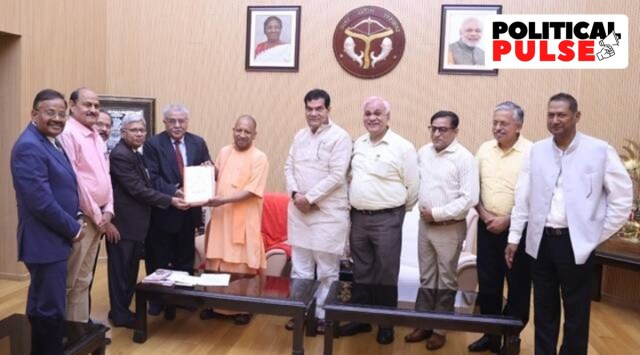Rotate, decentralise rotation: how UP panel for OBC quota in urban local bodies arrived at its findings
Commission took field trips, took help of economists, political scientists, took into account 2011 Census, rapid surveys to arrive at total numbers to be set aside at different levels
 Among other things, the commission recommended “decentralisation of reservation”, as during field visits, it found a major complaint was that under the existing formula, the number of “reserved or unreserved” seats remained constant over a period of time. (File)
Among other things, the commission recommended “decentralisation of reservation”, as during field visits, it found a major complaint was that under the existing formula, the number of “reserved or unreserved” seats remained constant over a period of time. (File)
The Uttar Pradesh government has issued a notification for reservations in the forthcoming Urban Local Body (ULB) elections in the state, based on “recommendations” of a dedicated commission, constituted by the government in December to study the representation of other backward classes (OBCs) in ULBs.
Sources told The Indian Express that in order to derive a formula and recommend the best possible model for reservations in ULBs, the commission carried out field trips and took the help of economists and political scientists, while taking into account Census 2011 and the rapid surveys conducted by the Uttar Pradesh Urban Development Department in 2017 and 2022.
The five member commission was headed by Justice (retired) Ram Avtar Singh and included retired IAS officers Chob Singh Verma and Mahendra Kumar, as well as former additional law advisers Santosh Kumar Vishwakarma and Brajesh Kumar Soni.
Among other things, the commission recommended “decentralisation of reservation”, as during field visits, it found a major complaint was that under the existing formula, the number of “reserved or unreserved” seats remained constant over a period of time.
“When we travelled around the state, the general complaint was that the number of reserved or unreserved seats remained the same for most regions, as reservation rotation was done at the state level for elections to all three layers of administration, from Mayor to Nagar Panchayat,” said a team member, requesting anonymity. He said they looked at the 760 local body posts across UP –17 of mayor, 200 of Nagar Palika Parishad chairmen, and 545 of Nagar Panchayat chairmen, barring two posts that are under dispute.
Asked why the number of seats reserved for OBCs had remained the same (i.e. 205), in the December 2022 notification, the member said they arrived at that number following the 27 per cent OBC reservation formula. However, he said, while they recommended the number of seats to be reserved for each electoral layer, they didn’t recommend which exact seats should be reserved.
“Our mandate was to ascertain the proportion of OBCs out of the total population in each of these 760 local bodies, on the basis of available records, reports, surveys and other data, and also to conduct an inquiry into the nature and implications of backwardness in relation to the local bodies. The decision on which seat is to be reserved based on the findings has been taken by the government,” he said.
He further explained that under the existing system, the decision on which seats to rotate for all three layers of local bodies — i.e. Municipal Corporations, Nagar Palika Parishads and Nagar Panchayats — used to be taken at the state level, using the latest population figures for the entire state, arranging them in a descending order — with regions ranked according to higher numbers of OBCs and SC/STs — and then allowing reservations from the top. It was found that since earlier, state-level data was considered, some regions that had a higher OBC population got fewer reserved seats than they “deserved”, while other regions were completely left out. In fact, while announcing the notification, Urban Development Minister A K Sharma spoke about how the entire Devipatan region (the districts of Gonda, Bahraich, Sharavasti and Balrampur) did not have any OBC representation at all.
“In this system, where data of the entire state was used to decide reservations at all three levels, reservation at many places remained the same over decades, while since the beginning, some areas did not get covered under reservation at all. We suggested changes in the provisions for deciding the reservations for each ULB tier, to ensure that each section everywhere gets to experience reservation,” said the member, adding that since the number of seats available for mayors was just 17, the decision on mayoral rotation had to be made at the state level.
For Nagar Panchayats, the process to identify reservation was recommended at the District Magistrate level, while for Nagar Palika Parishads, it was recommended at the Divisional Commissioner level for the purpose of decentralisation and to ensure representation of all regions.
Using Municipal Corporations as example, the member said that since the proportion of OBCs in their population was found to be around 25.58 per cent, four out of the 17 mayoral seats were recommended for OBCs.
Similarly, for Nagar Palika Parishads, covering a population containing about 42 per cent OBCs, 54 seats out of 200 seats were recommended for reservation, considering the 27 per cent formula. In Nagar Panchayats, out of 545 seats, 147 seats were recommended for reservation for OBCs, keeping the same formula in mind.



- 01
- 02
- 03
- 04
- 05




























